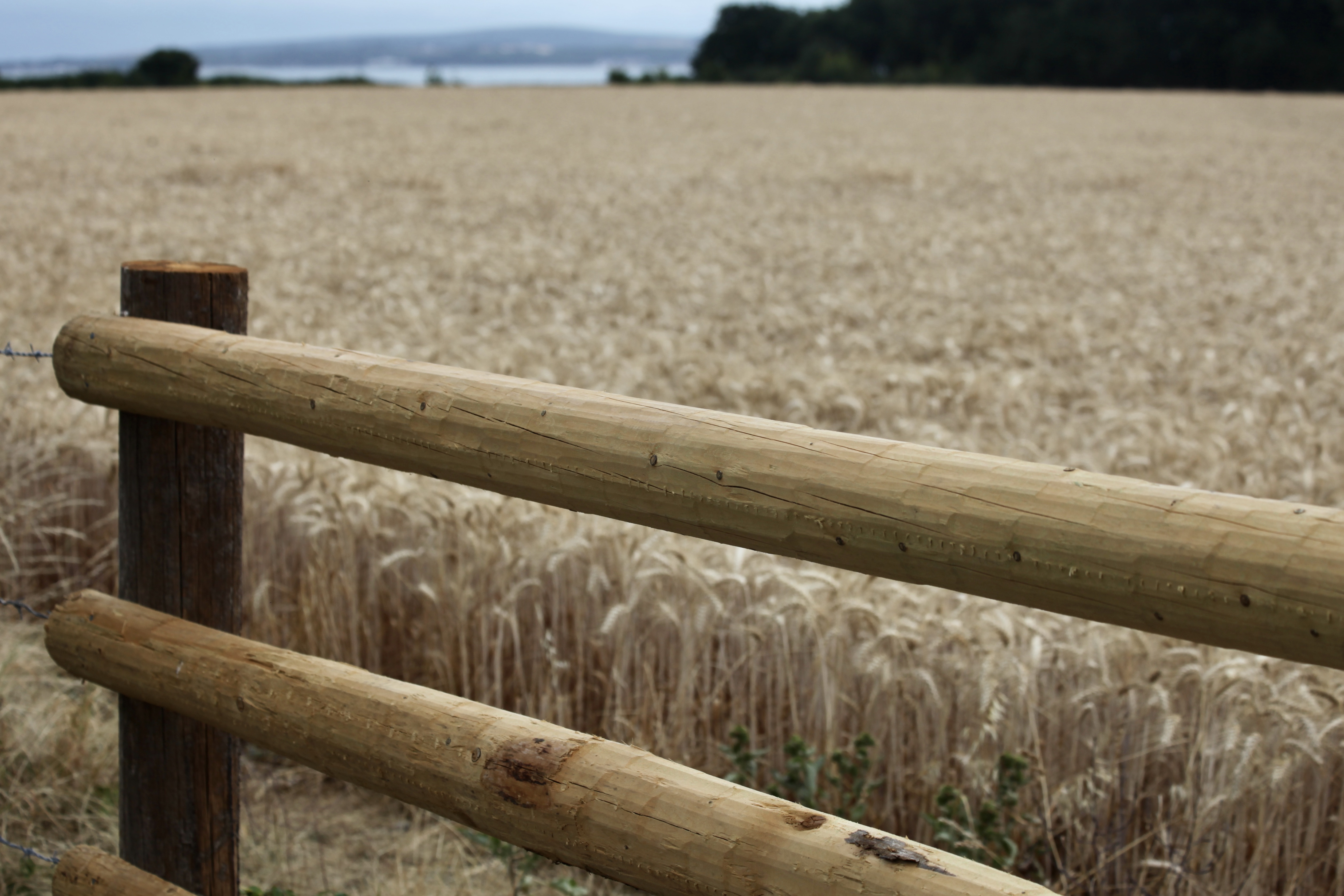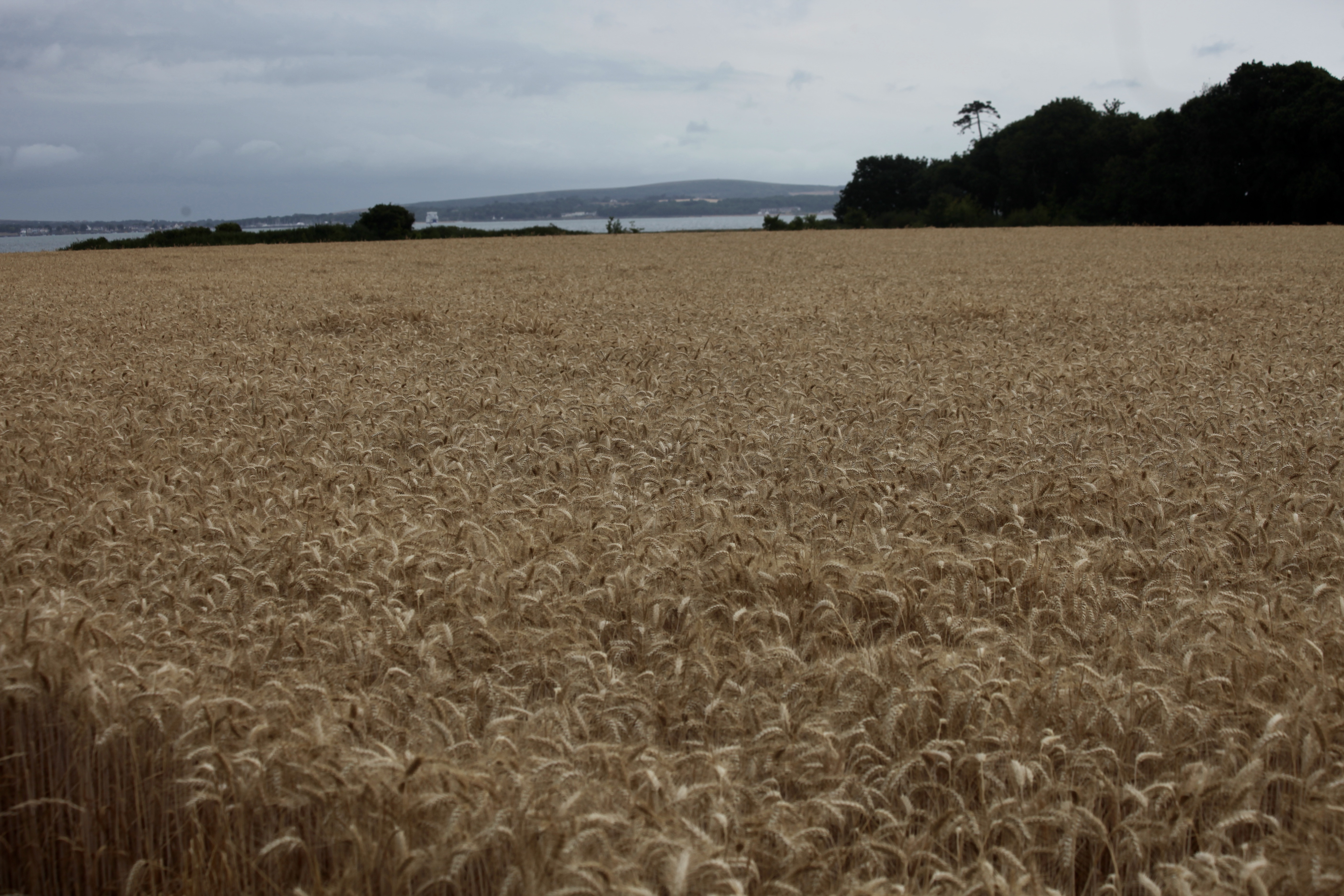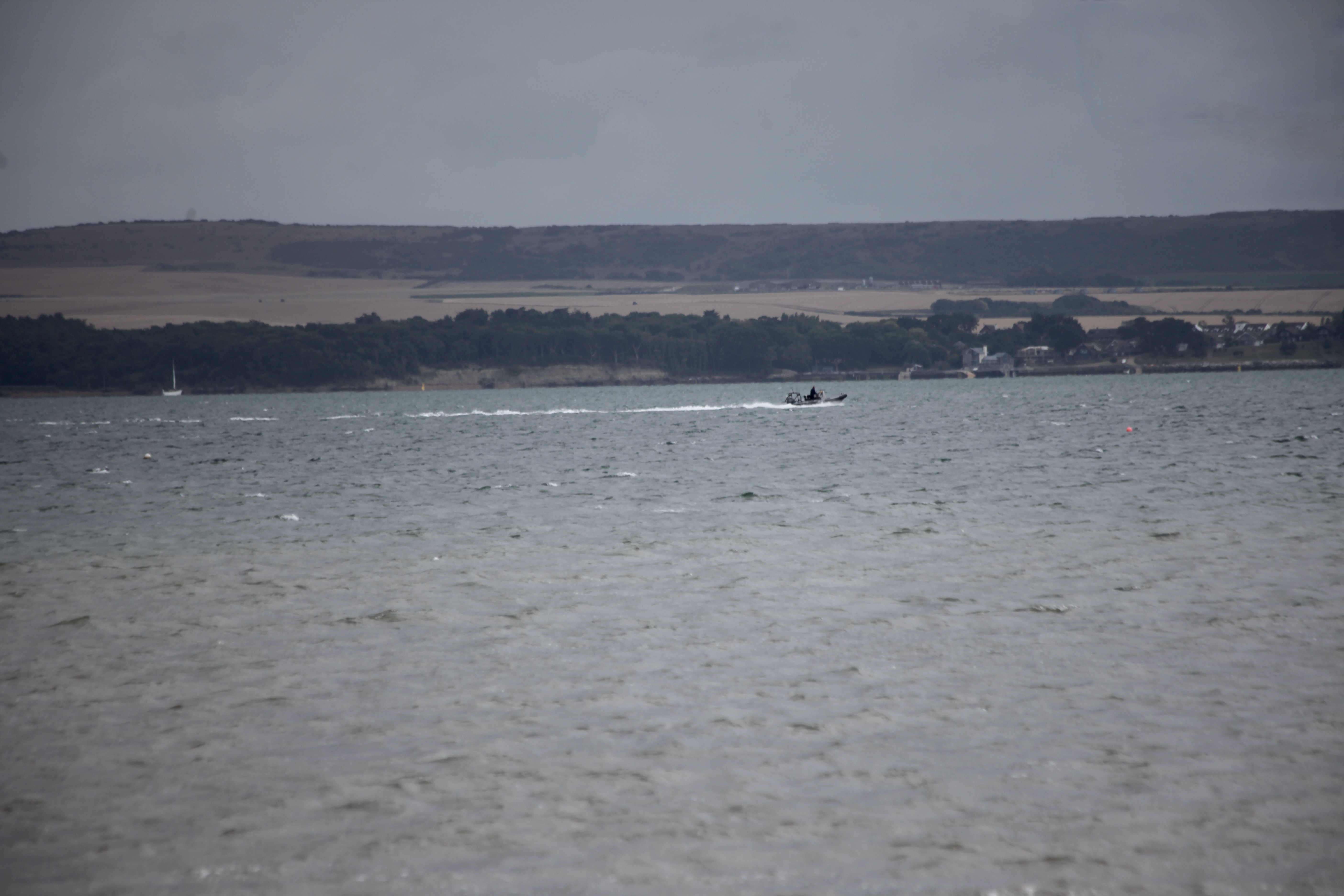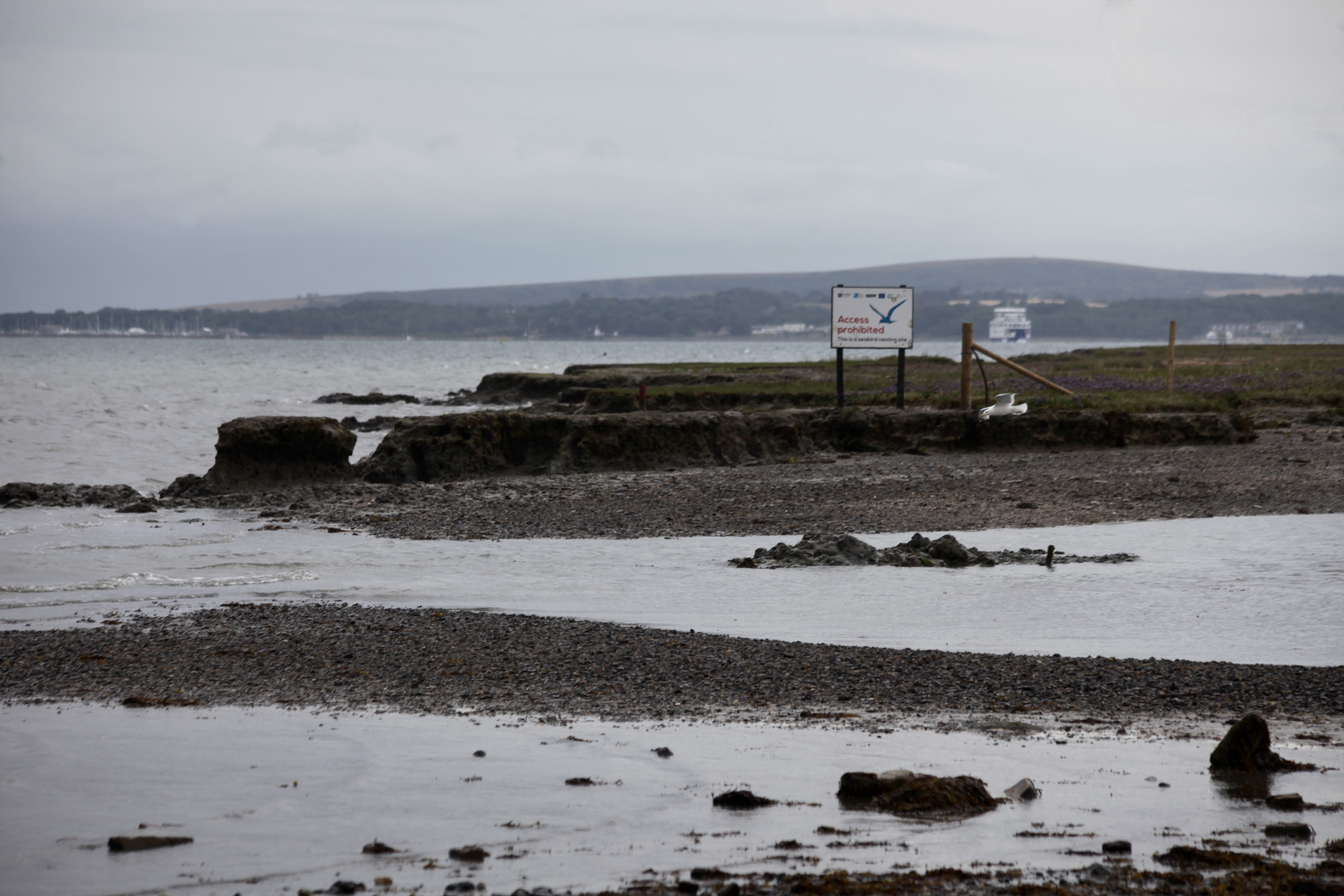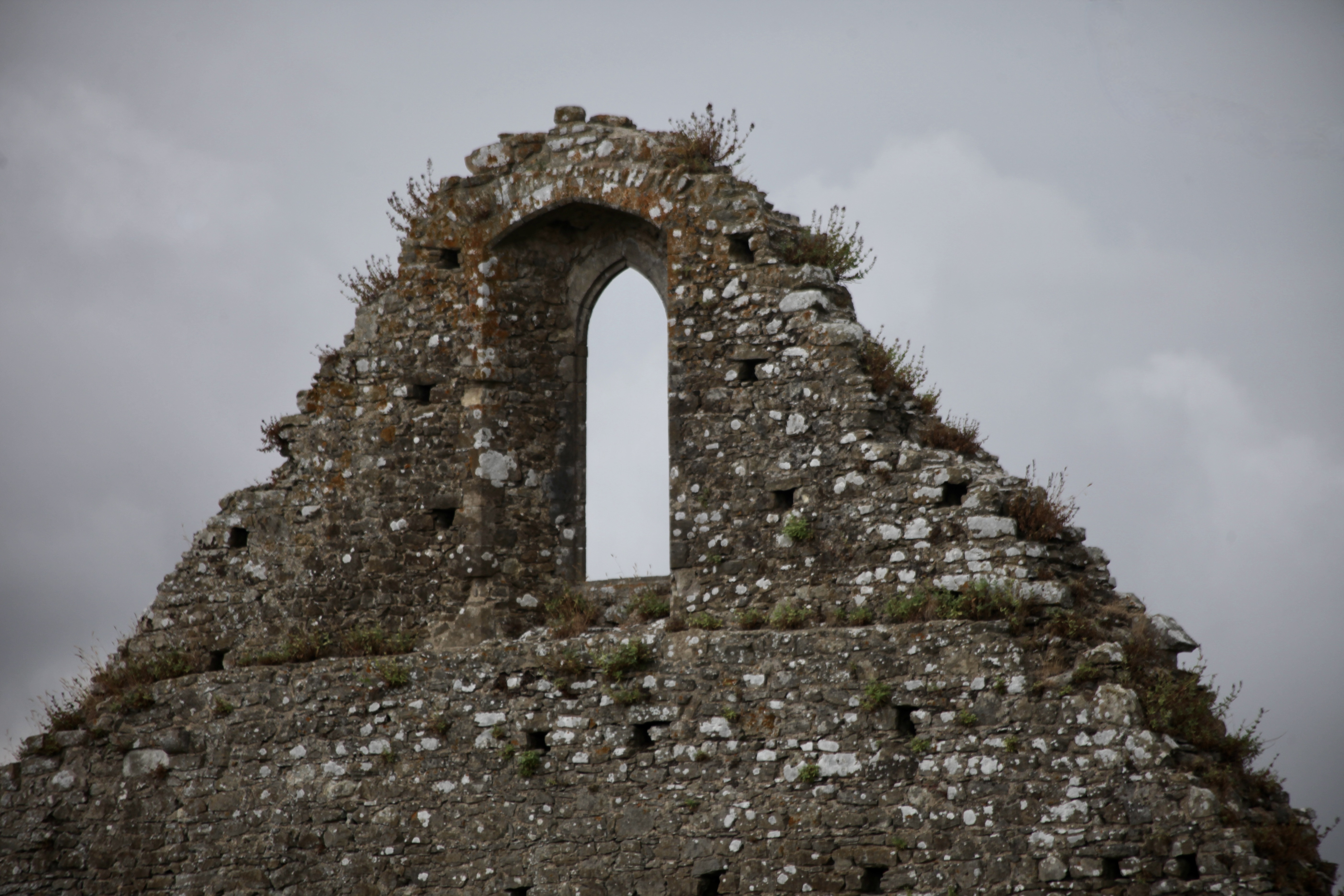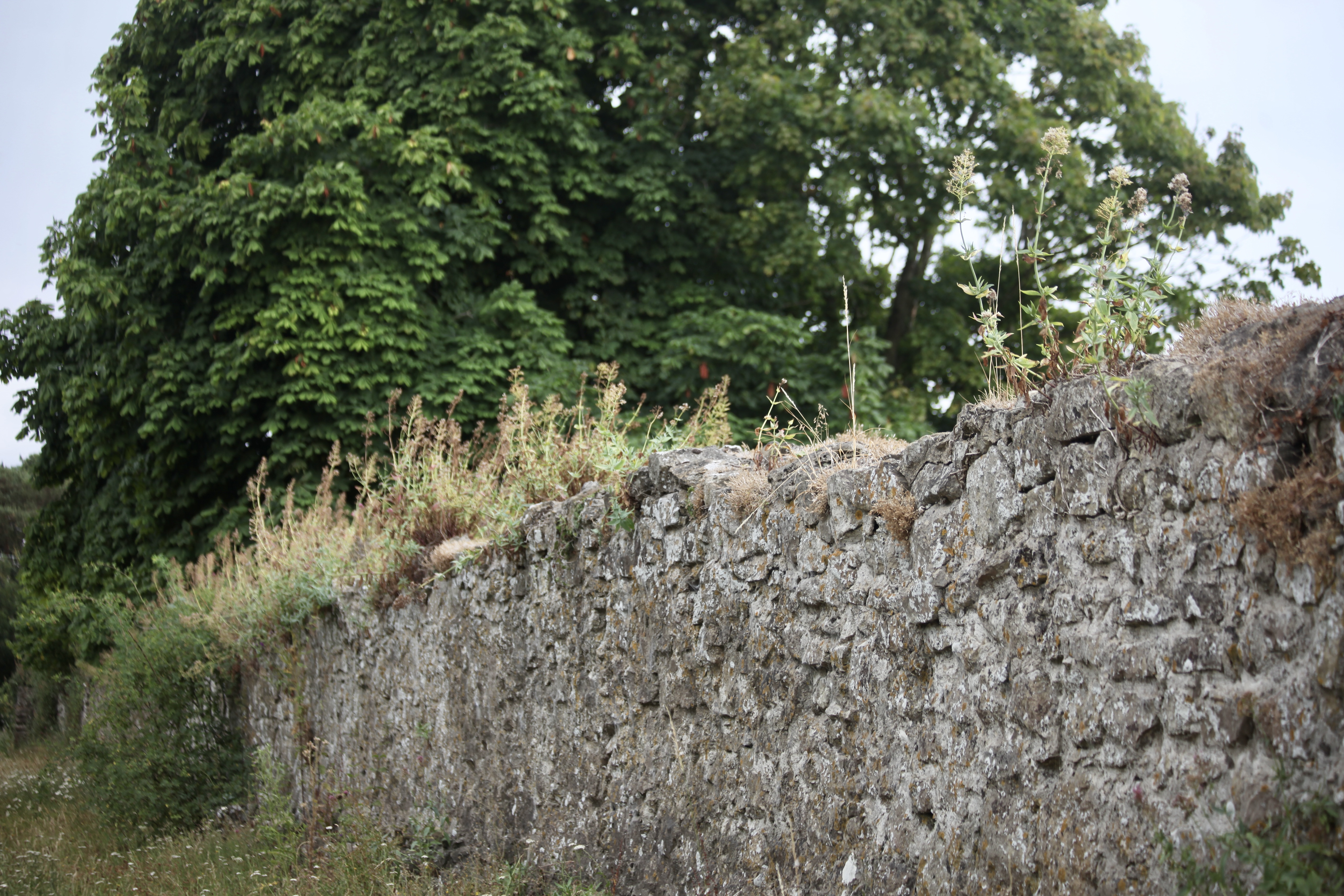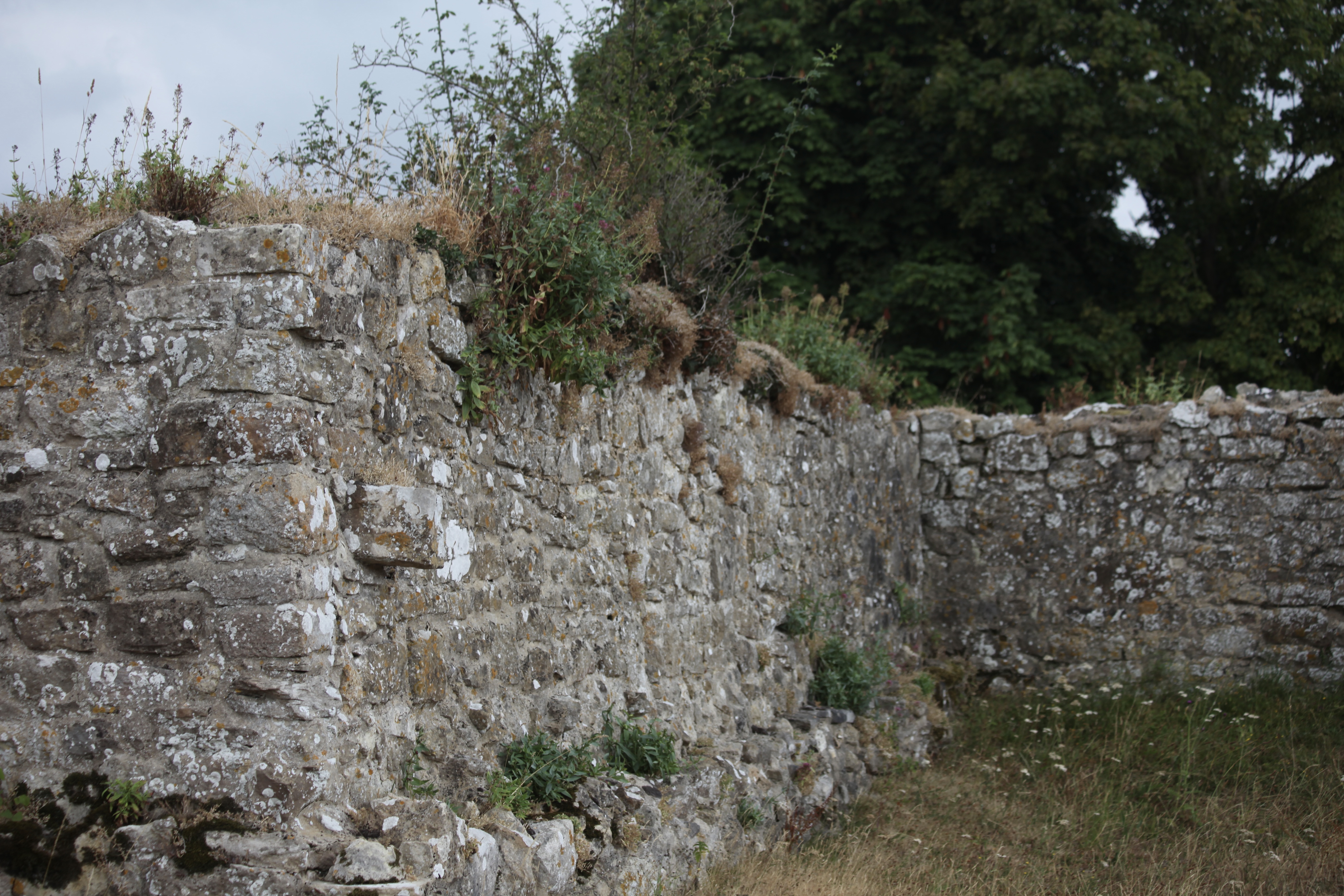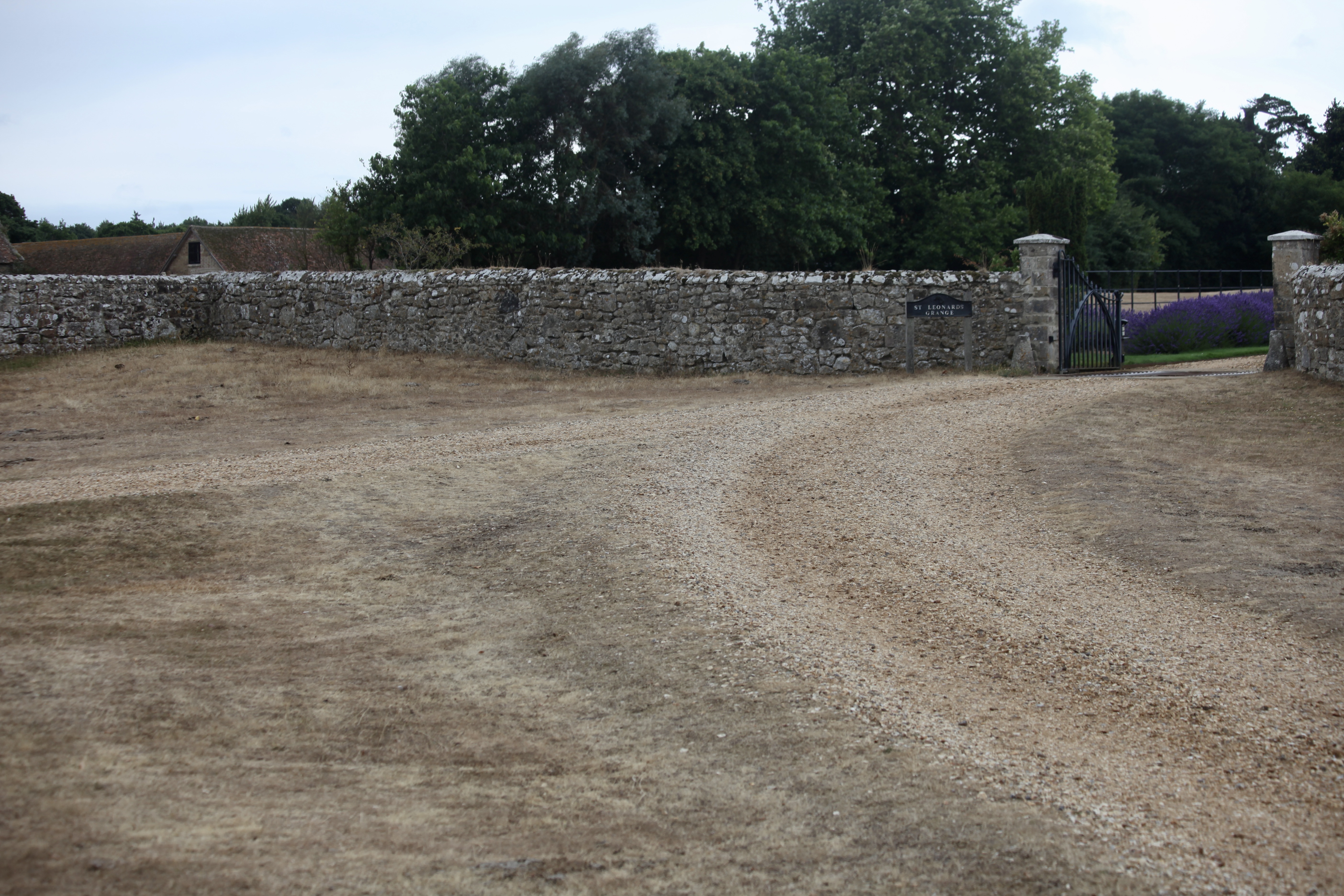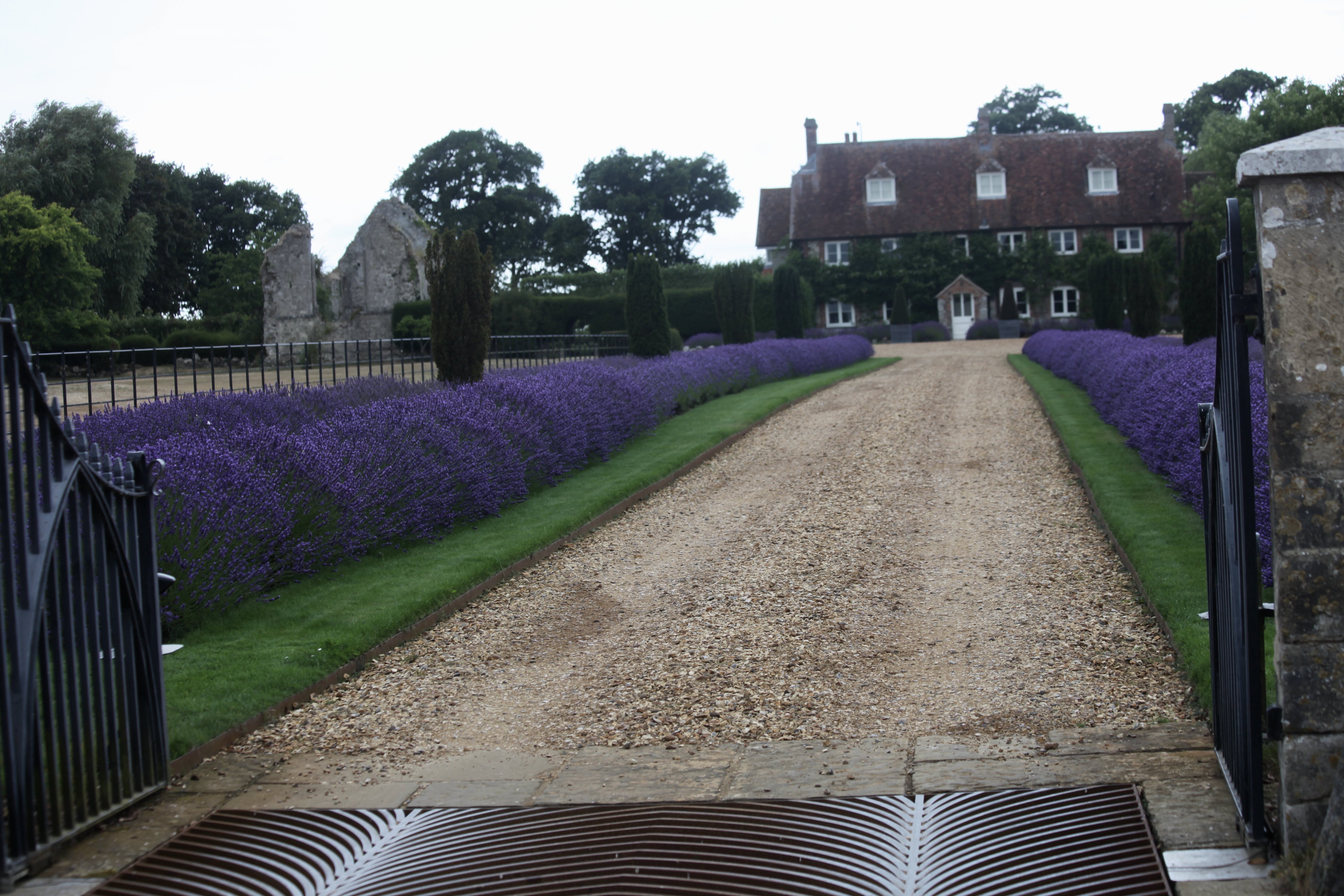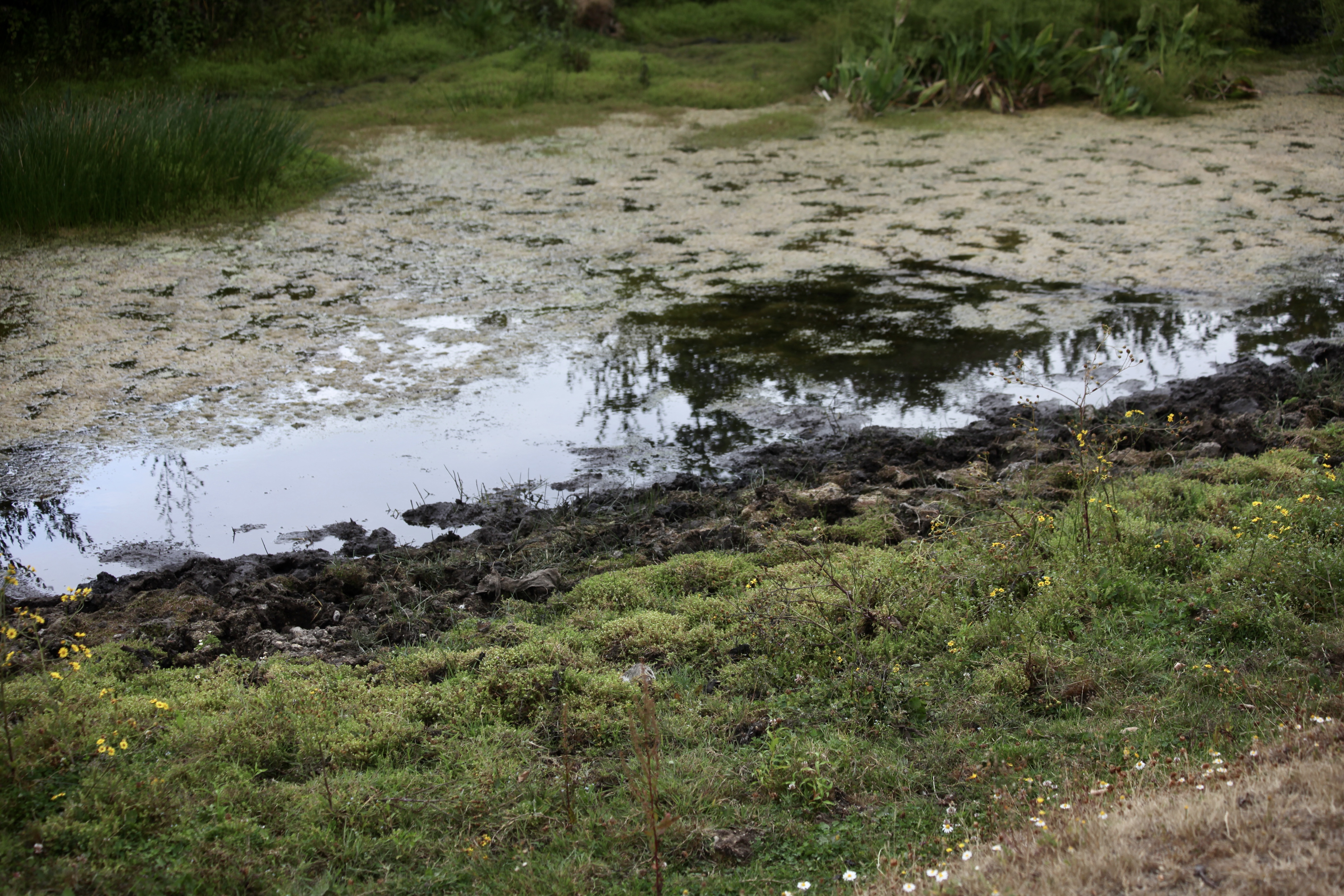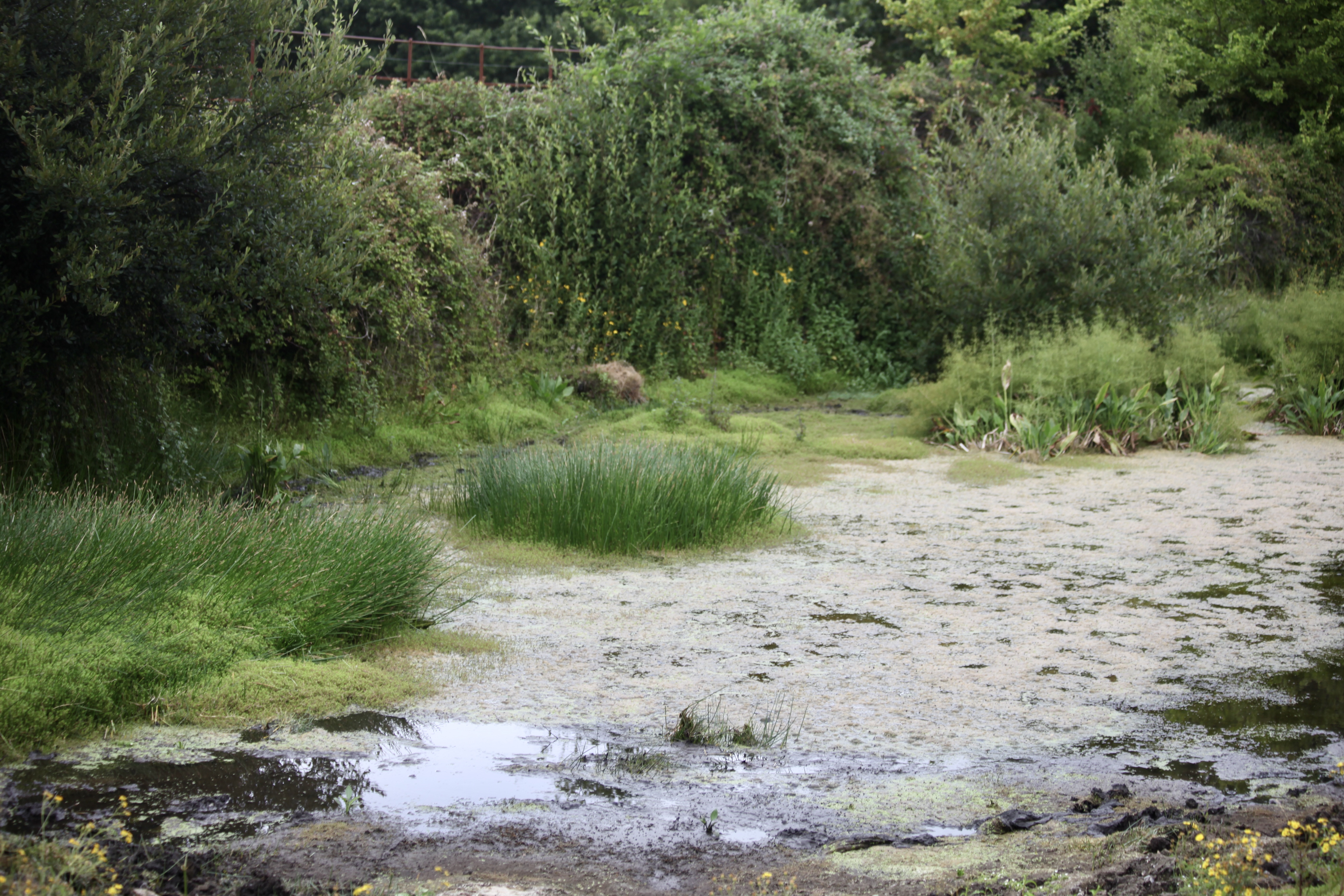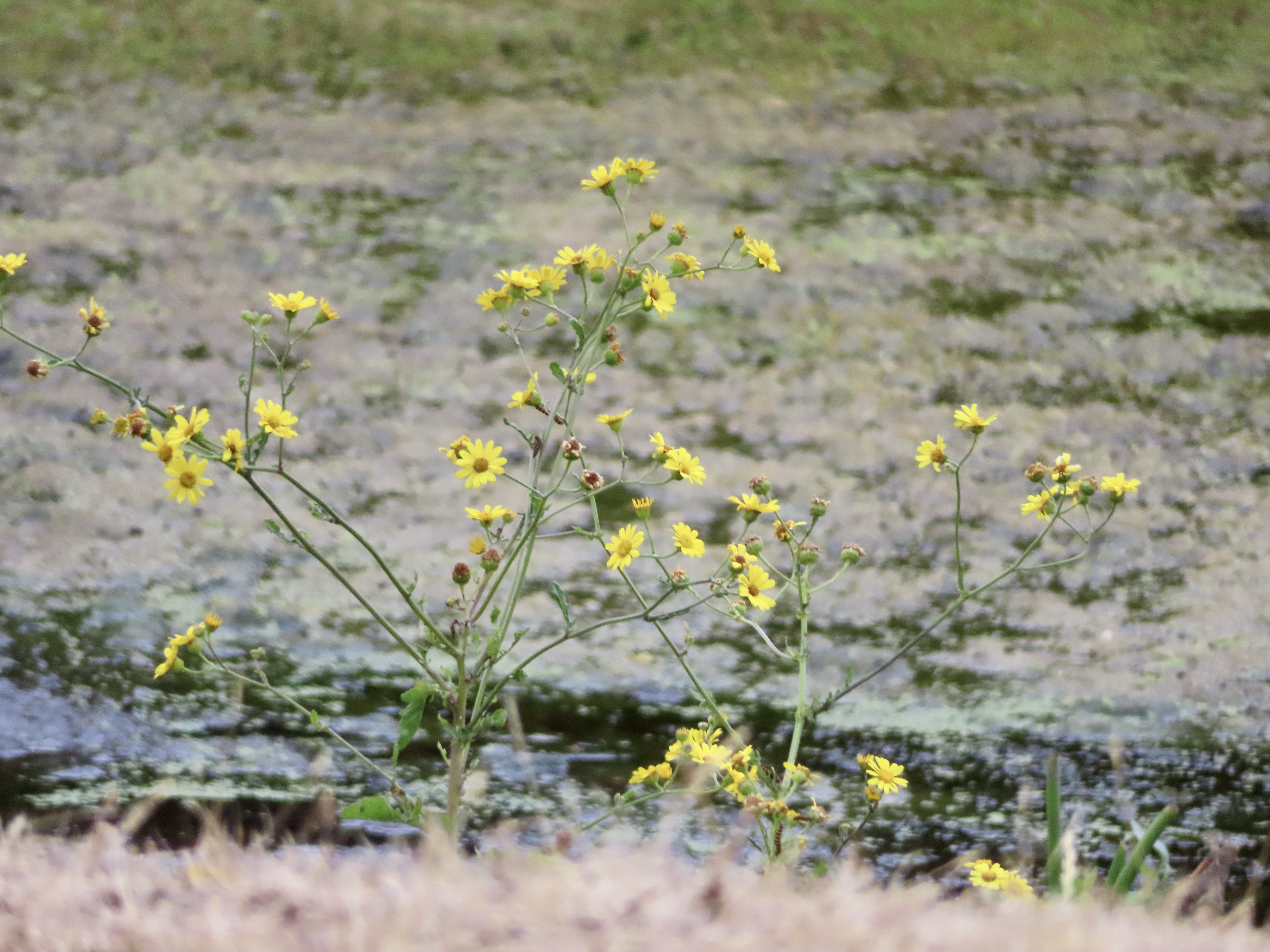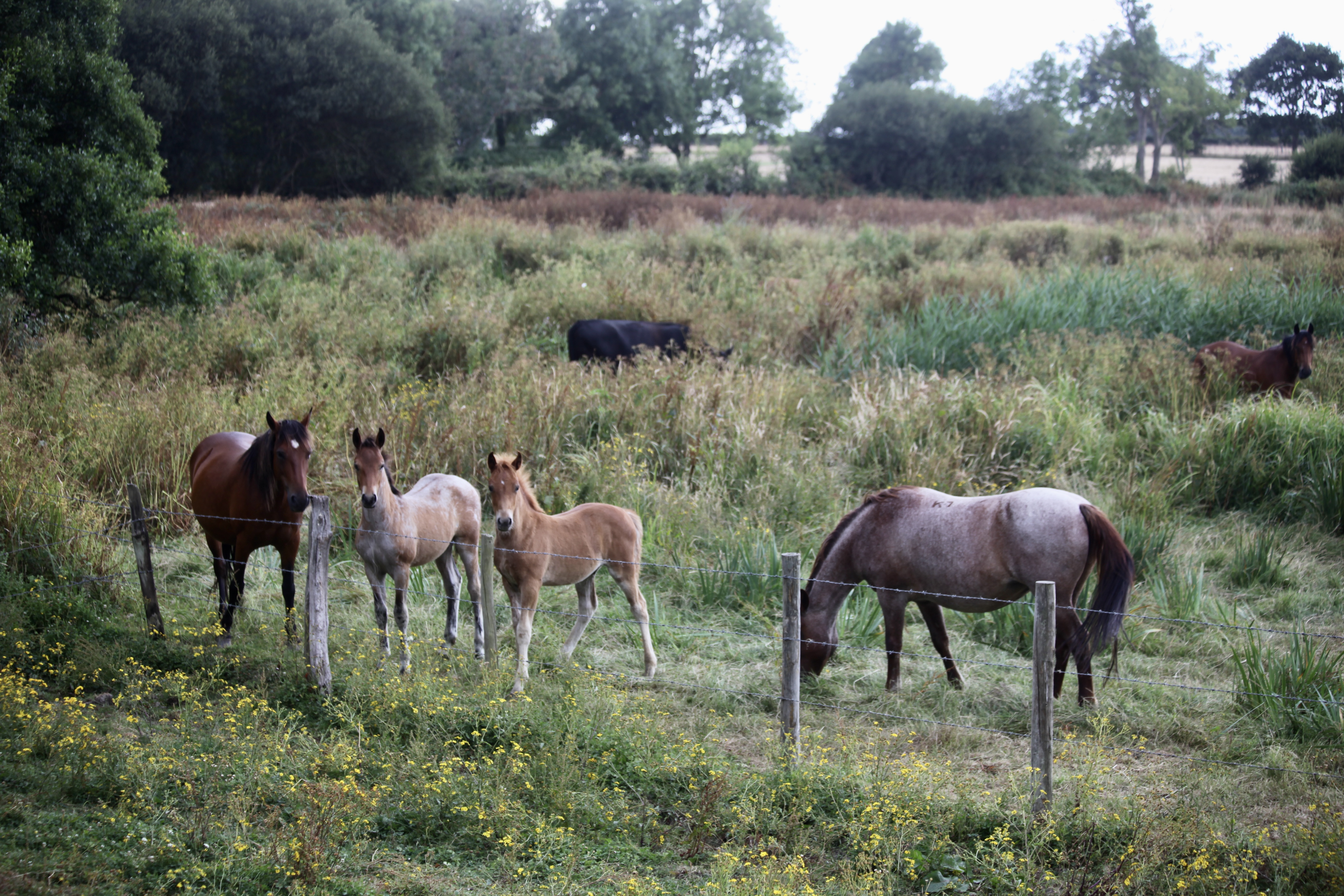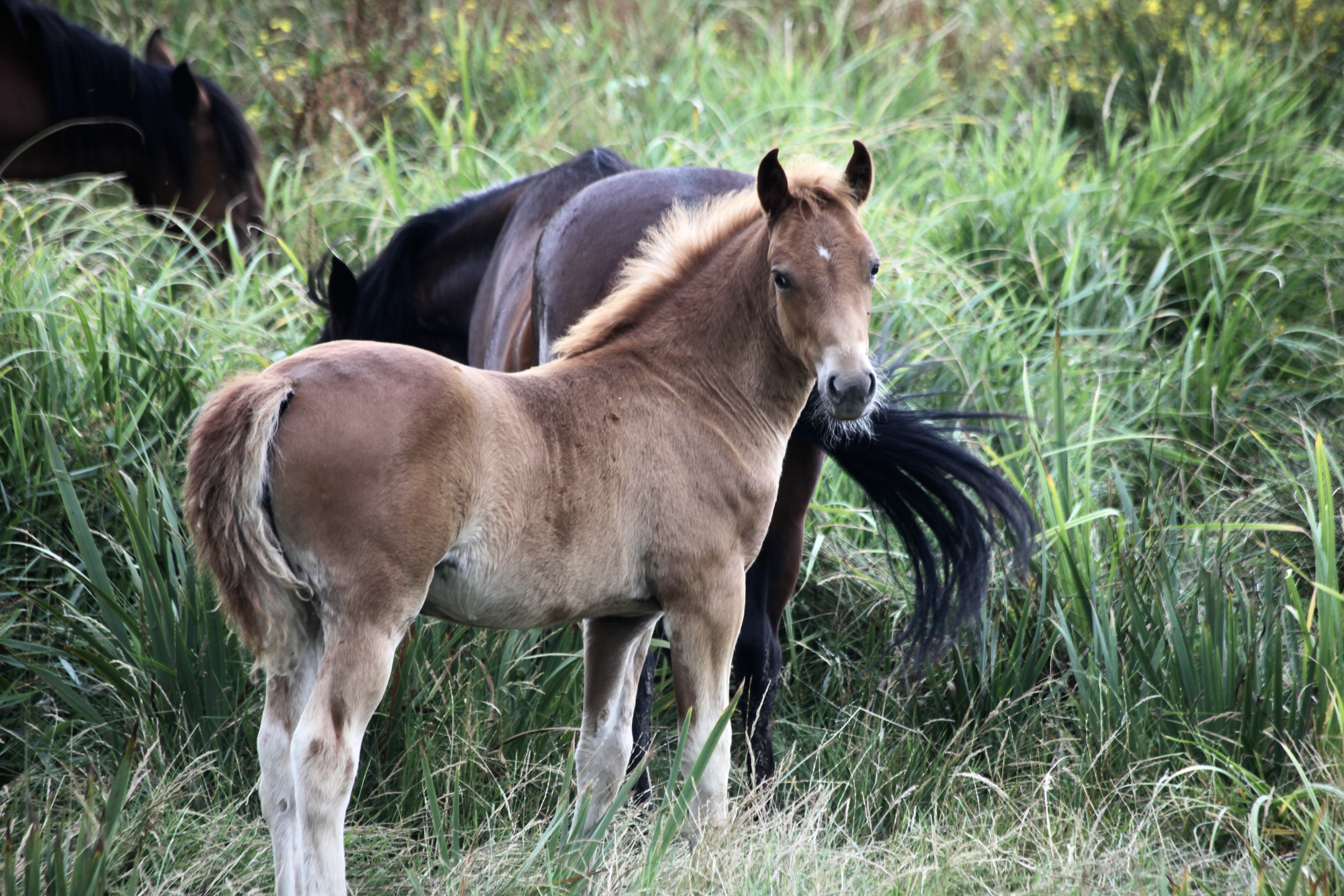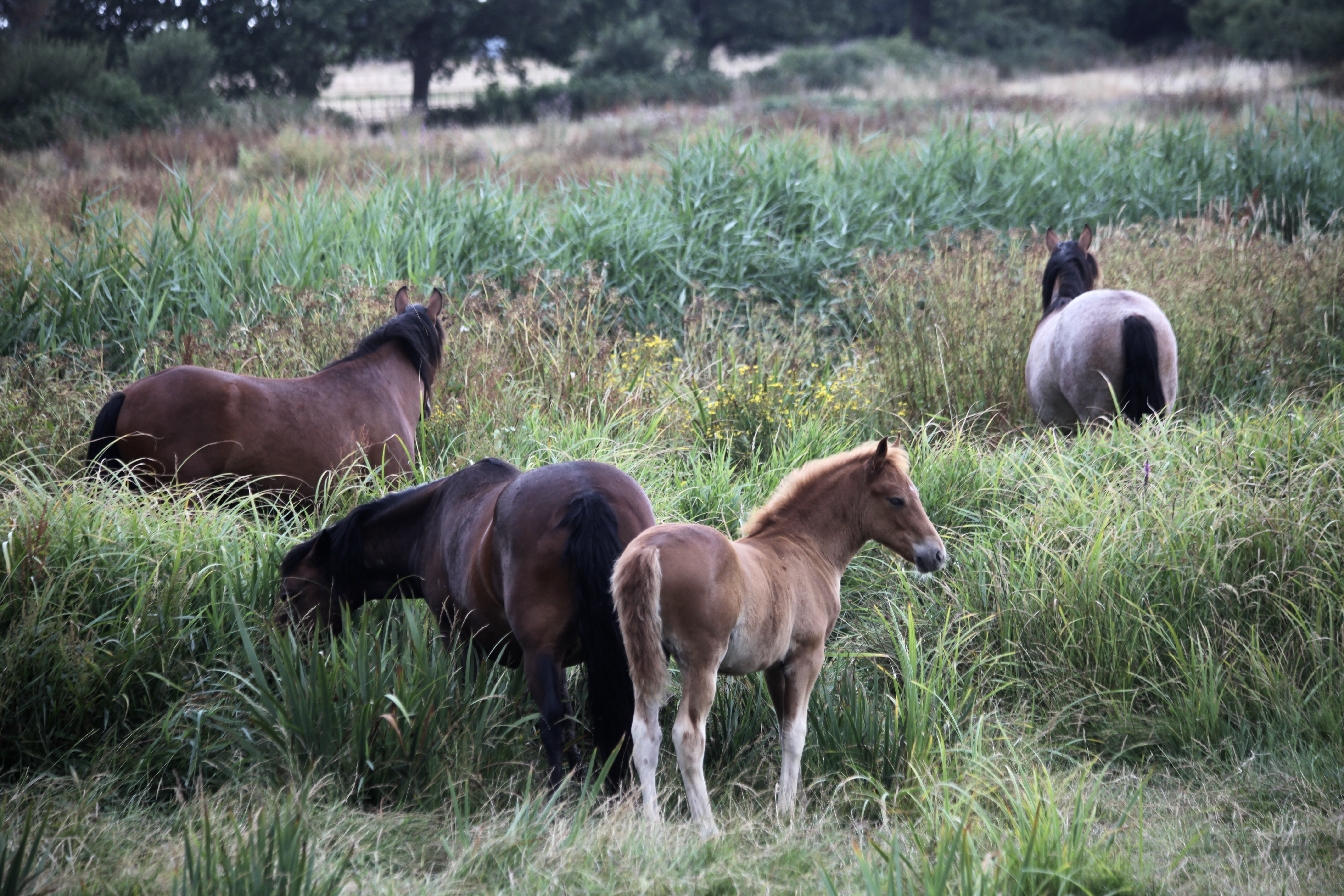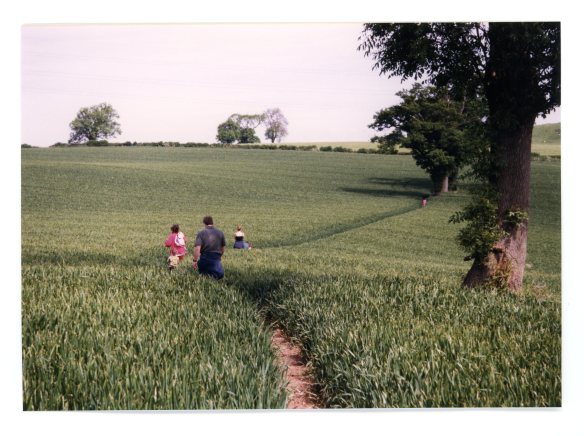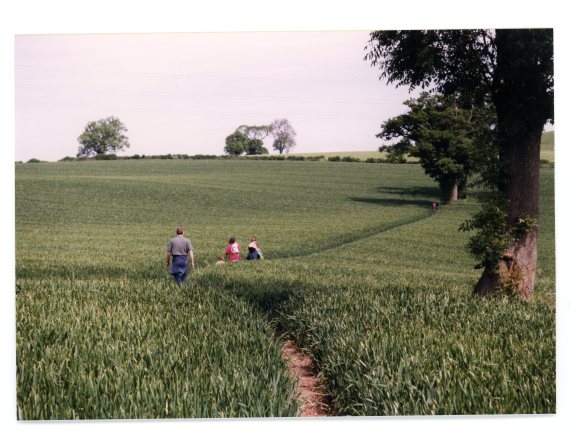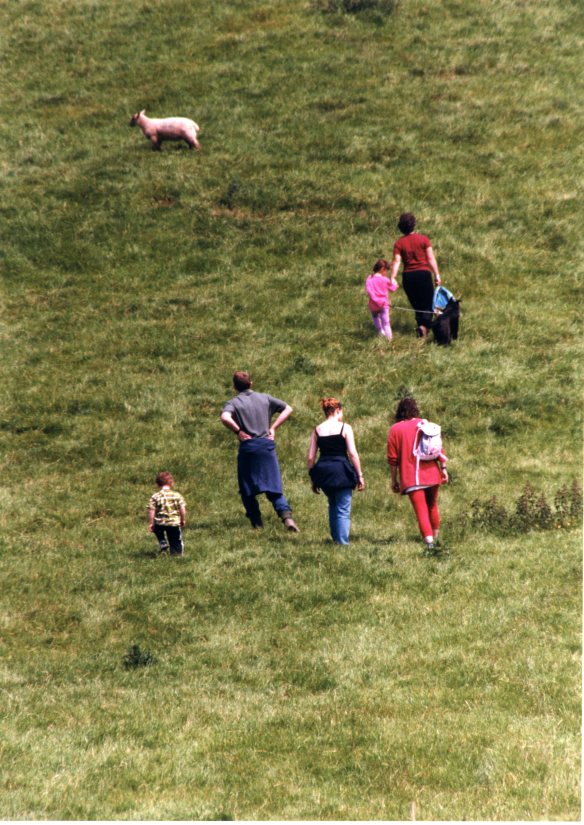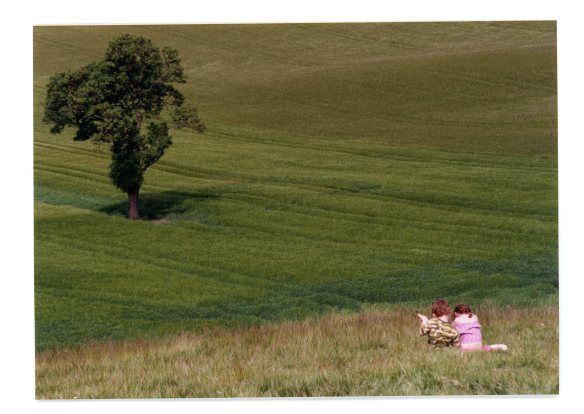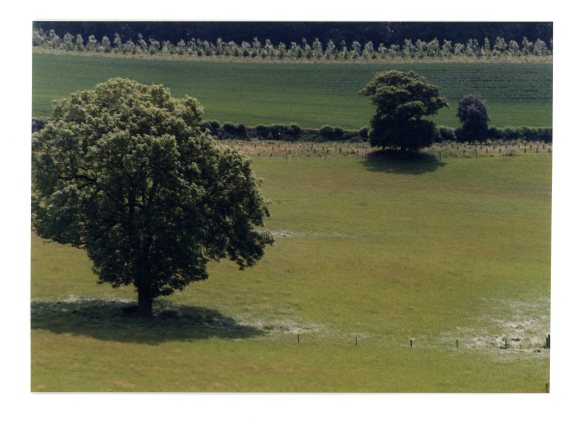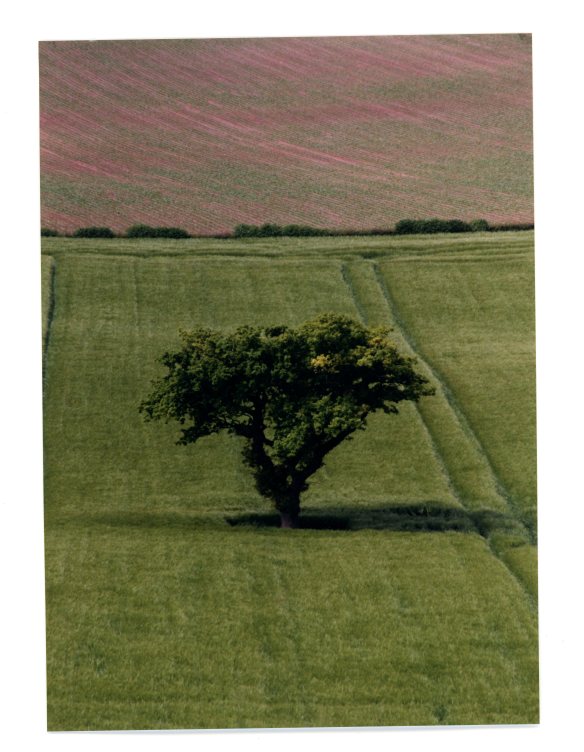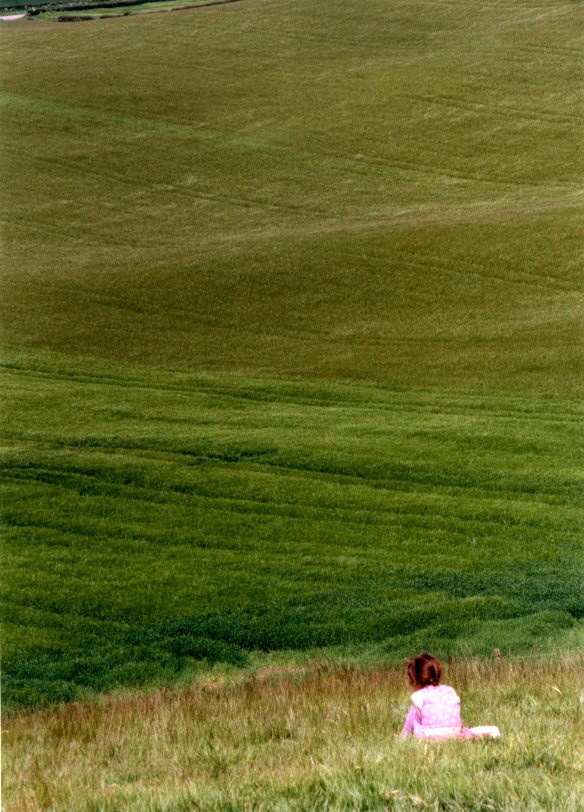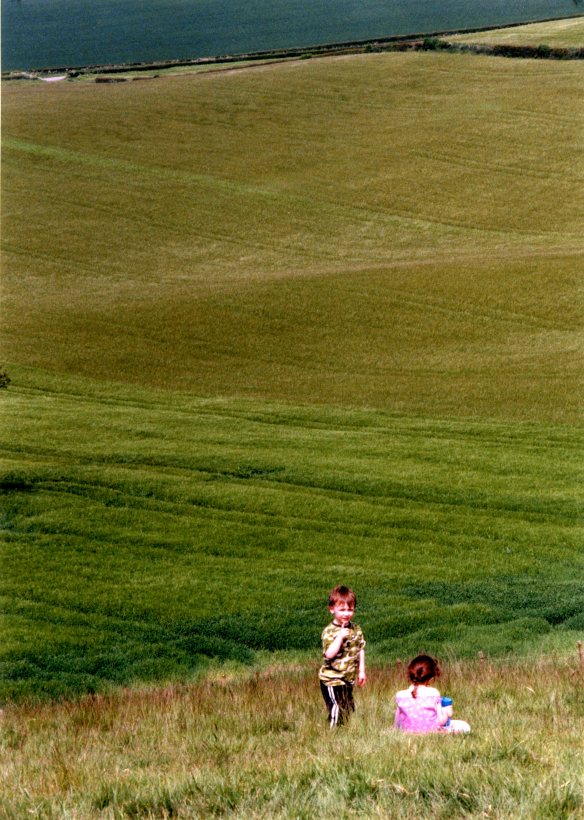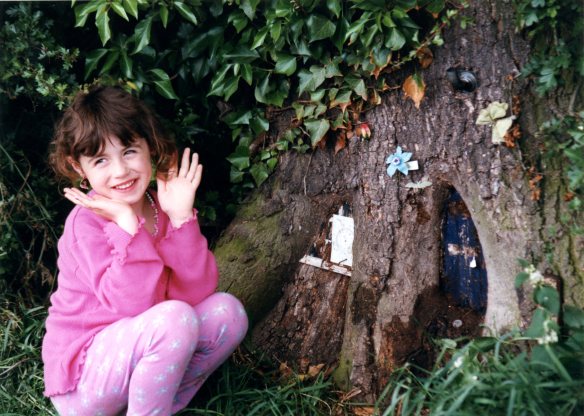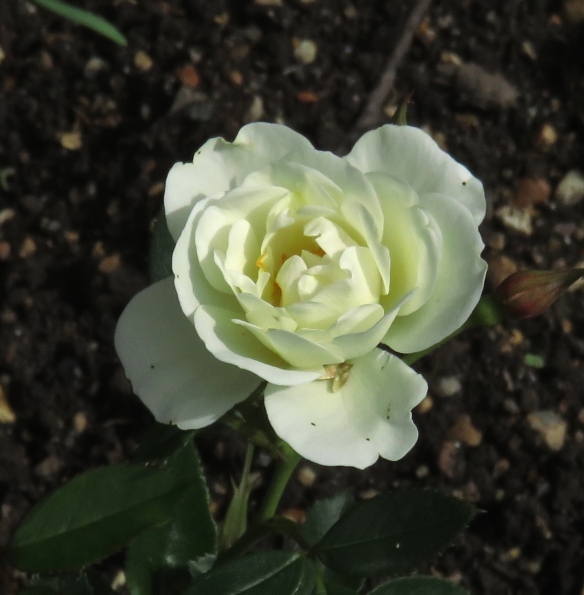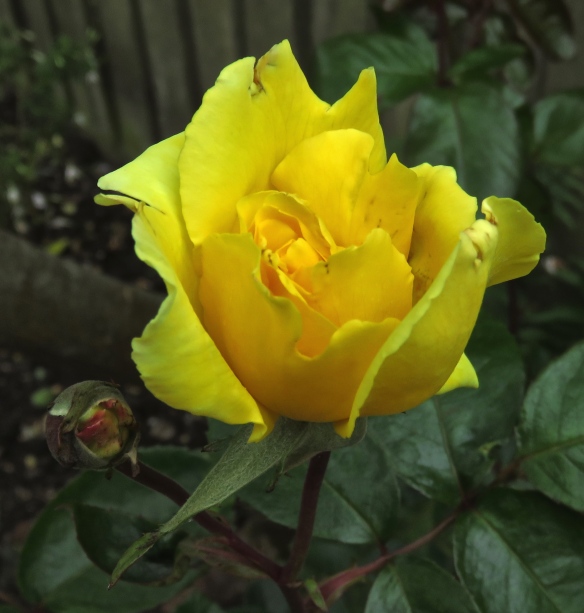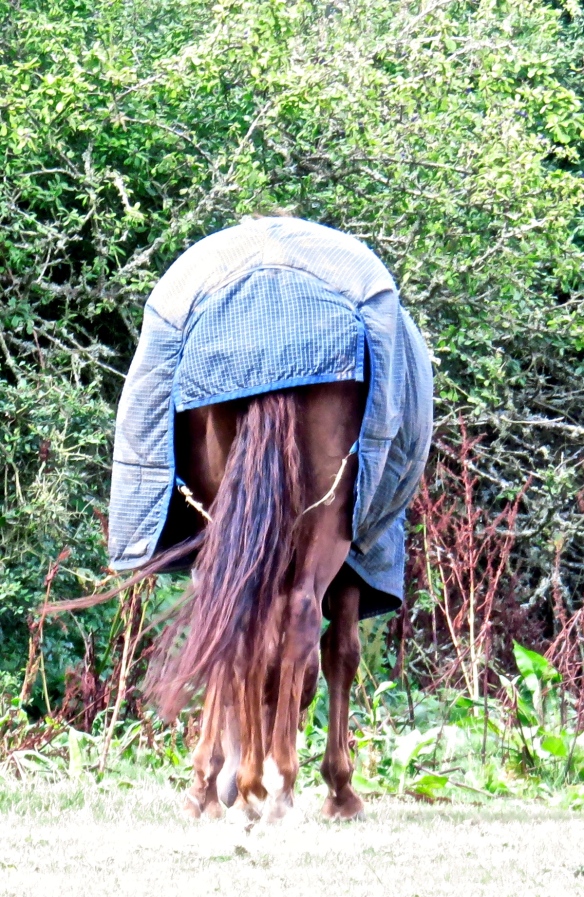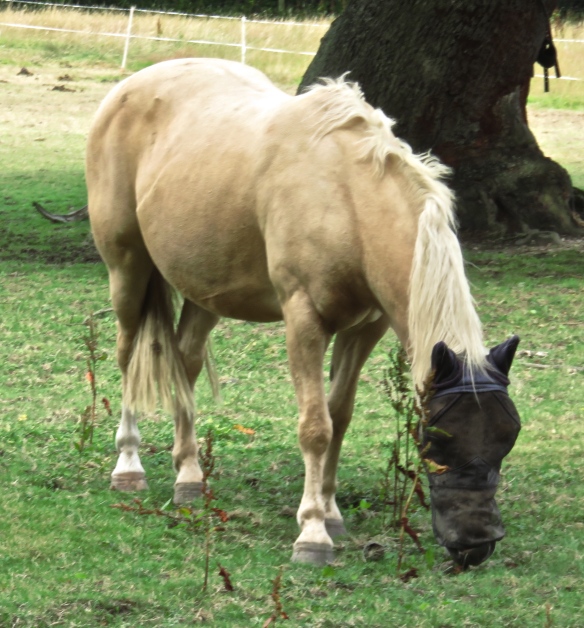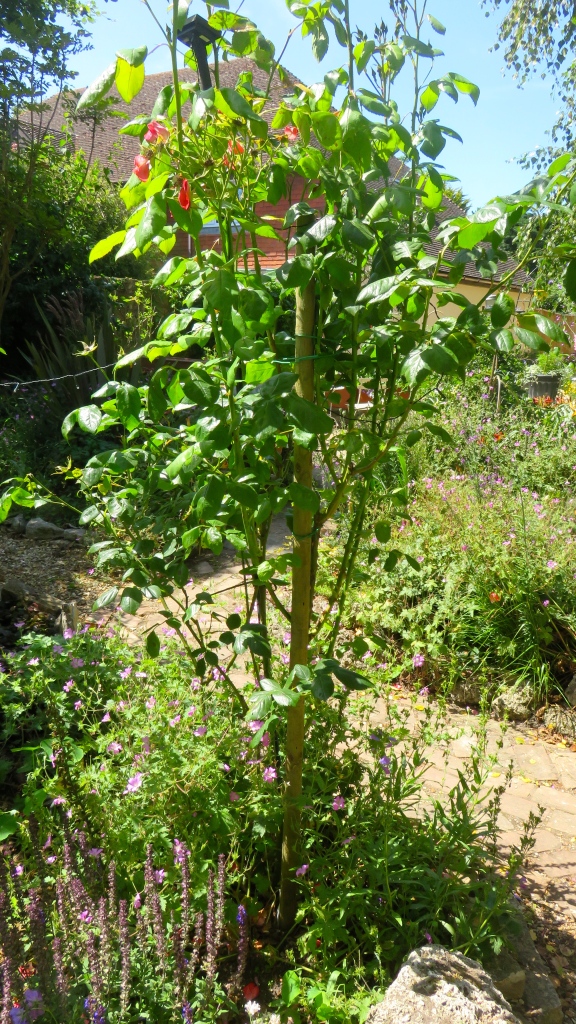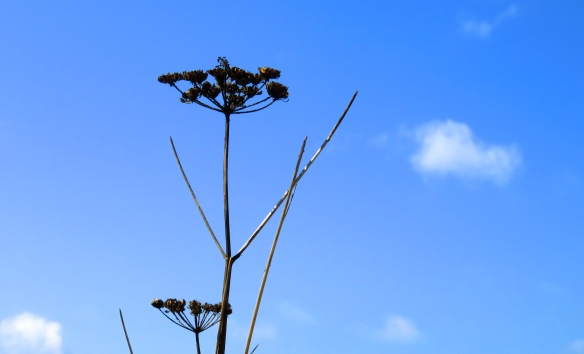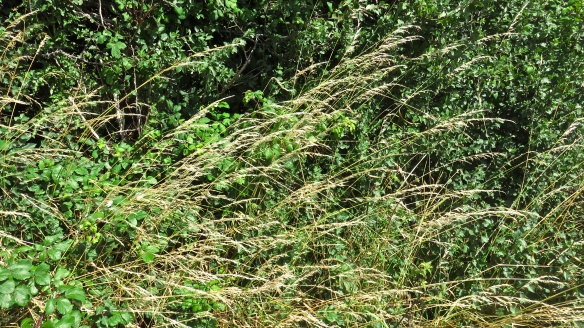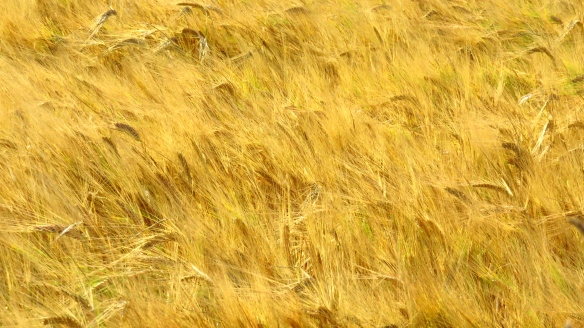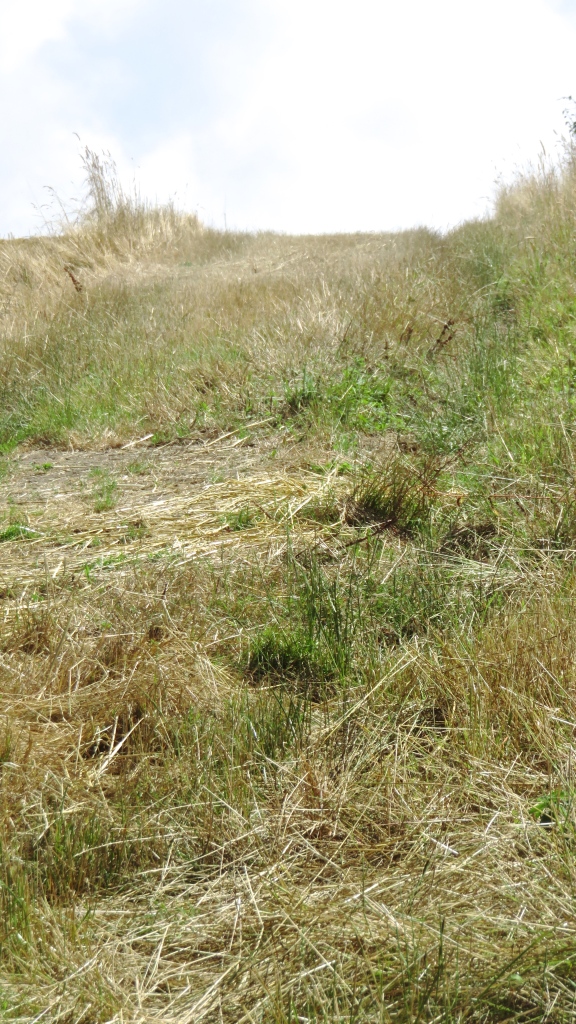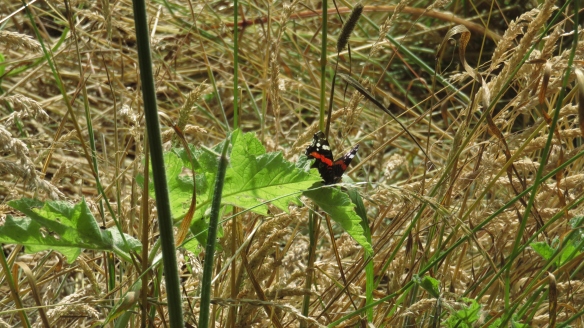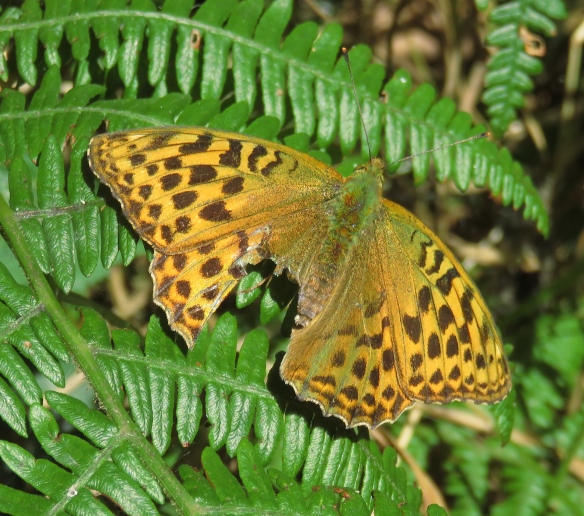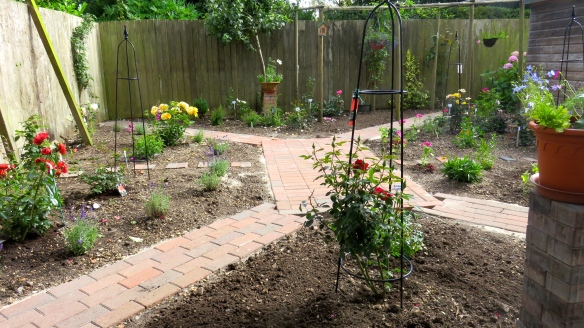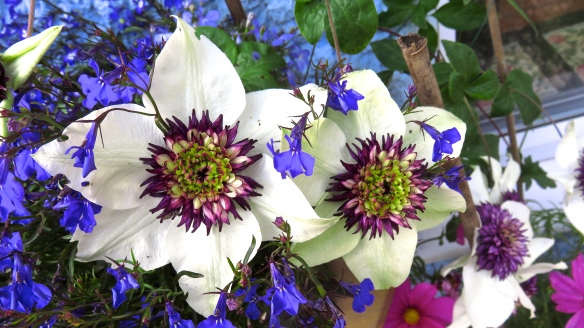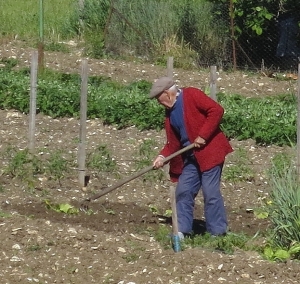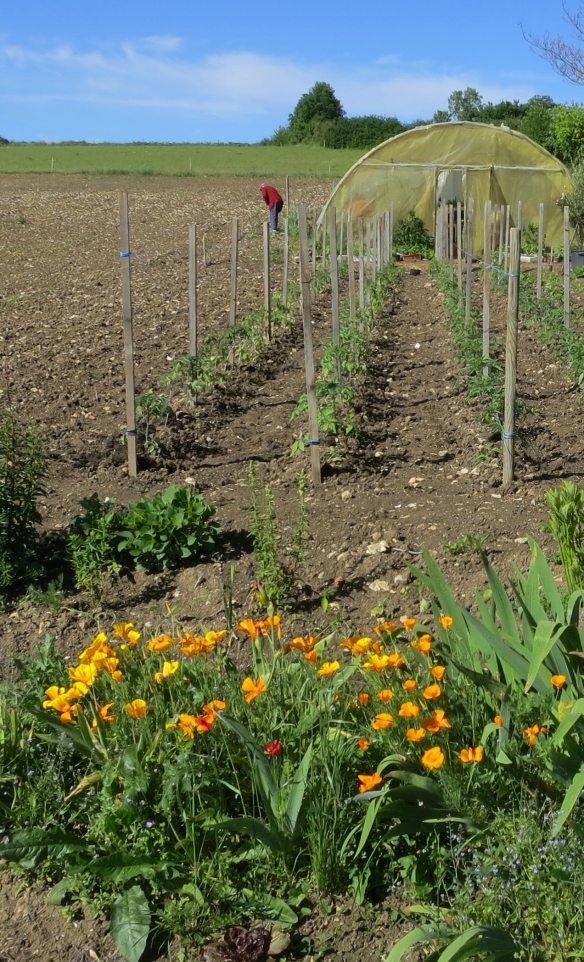On a bright, sunny, morning I rambled around the garden, down the lane, along Roger’s footpath and back.
From our patio can be seen a rhododendron, geranium palmatums, petunias, foxgloves, and fennel.
The centre of the Phantom Path gives a view towards that shown above. We can also see that the clematis Star of India and an unnamed white rose frolic together on the Gothic Arch.
This red rose, aptly named Altissimo, climbs between Elizabeth’s bed and the rose garden.
a sentinel to the Back Path.
The morning sun burns out detail on the right hand side of Downton Lane, glinting on the back of a shade-seeking orange ladybird, just filtering through shrubbery on the left.
This gate must have once led into a garden beyond it.
Roger is growing barley this year.
Across the left hand field a large vessel sedately traversed the horizon as yachts skimmed along a deep blue Christchurch Bay.
To my right clouds slid silently over Downton.
All I could hear were the strings of countless insects’ wings.
The pong of fermenting slurry filled my nostrils.
Back home, a far more appetising aroma greeted me. Jackie was preparing a sausage casserole for Sam’s visit tomorrow. I suppose I can defer my gratification until then.
This afternoon we planted other flowers, such as heucheras and penstemons into the rose garden, offering some variation.
The rose Deep Secret has now revealed all.
During my childhood, we used to brighten our copper pennies by rubbing them on the bricks of the school wall. Old bricks, not modern paving ones that don’t crumble into dust on the application of friction. So, when Jackie unearthed a tiny coin encrusted with thick verdigris, I was off in search of an old brick. They are not hard to find in the garden of Old Post House. I cleaned enough to know what a treasure we had found, but, since we were now afraid of scrubbing off any more detail, Jackie finished the job with Hob Brite, a rather gentler abrasive.
We had exhumed a small coin, bearing, on the obverse, the somewhat pockmarked head of Queen Victoria; on the reverse, Britannia, the date 1893, and its denomination. So soon after the previous post, we had found a farthing. Serendipity or what? How long had that lain in the soil? Who had dropped it? We will never know.
The previous posting featured a wren, which did not appear on the reverse until the pattern coin of Edward VIII (so called because it had not yet been approved by the time of his abdication in 1936). The little bird first replaced Britannia in 1937, during the reign of the father of Queen Elizabeth II, King George VI, who succeeded his older brother.
For tonight’s dinner, barbecue sauce flavoured the spare ribs; Jackie’s rice and green beans came with it. She drank Hoegaarden and I slurped Dao. This last verb was Jackie’s suggestion, when she pointed out that I had quaffed more than once recently. Not exactly couth, but there you have it.
P.S. Further research suggests that our coin is in fact bronze.


